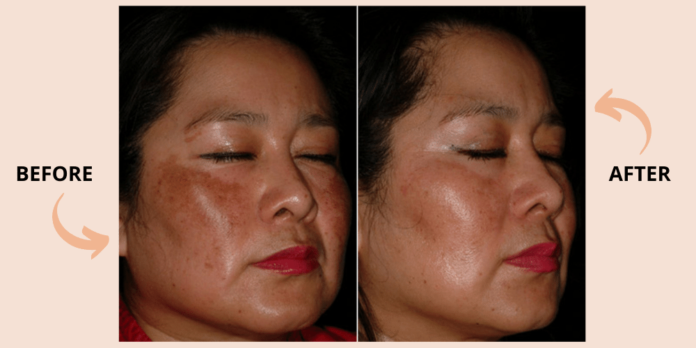Niacinamide (also known as vitamin B3 and nicotinamide) is largely-considered a holy-grail solution for many of the most common skin issues like dullness, acne, signs of aging, inflammation and redness, and hyperpigmentation. What’s more, it boosts hydration. It prevents trans epidermal water loss and actually boosts the ability of other moisturizing ingredients to do so as well.
There is plenty of research to back up the benefits of using niacinamide in skincare. Below, a breakdown of what niacinamide is, and the most effective ways to build it into your skincare regimen.
Niacinamide and its benefits
Niacinamide is a water-soluble derivative of niacin or vitamin B3 which is particularly famous for its soothing and healing properties. It’s often touted to help manage enlarged pores, acne, fine lines and wrinkles, and pigmentation issues. But is there any science behind those claims?
A study published in 2011 showed that applying 4% niacinamide for eight weeks significantly reduced pigmentation by blocking the transfer of pigment to the skin’s surface.
A study published in the British Journal of Dermatology revealed that a 5% niacinamide moisturizer applied twice daily for two weeks significantly improved hyperpigmentation. This shows that niacinamide has the potential of brightening skin over weeks.
Niacinamide works via several pathways, keeping new discolorations from appearing. At the same time, it also helps break up existing discoloration so your skin tone looks more even. If you struggle with dry skin, you will benefit from its help with ceramide production. And in those with oily skins, it can help regulate excess sebum production in the skin.
Are there any side effects of niacinamide?
This wonder vitamin is suitable for pretty much every skin type. Make sure to start with low concentrations of niacinamide as high concentrations can actually cause skin irritation. If your skin is sensitive, using retinol and niacinamide together at the same time may also increase the chances of skin irritation It’s safe to use when pregnant and breastfeeding.
How to use niacinamide for hyperpigmentation?
To reap the most skincare benefits, apply your favorite leave-on niacinamide product like cream, lotion, or serum to cleansed skin twice daily. It can also be combined with other products that soothe and brighten skin, and is commonly paired with ingredients like hyaluronic acid, kojic acid, ascorbyl acid, ceramides, and peptides.
Those with mature skin and stubborn concerns around advanced signs of sun damage should consider trying a 20% niacinamide serum for use once or twice daily. Experiment to see what works best for your skin!
How long does niacinamide take to work on hyperpigmentation?
In mild skincare conditions, you’ll notice visible results within two weeks. Based on most clinical studies performed on people with stubborn concerns, we can estimate that niacinamide can improve hyperpigmentation in 4-8 weeks.
So, if you’re after plump, hydrated skin as well as a reduction in pigmentation and visible pores, niacinamide may just be the answer.
You may also like
• What Does Niacinamide Do For Your Skin?
• 12 Best Niacinamide Serums and Creams for a Flawless Complexion
• Hydroquinone for Hyperpigmentation: Does it Really Work?
For more on fashion & beauty, follow Major Mag on Instagram and Pinterest.
